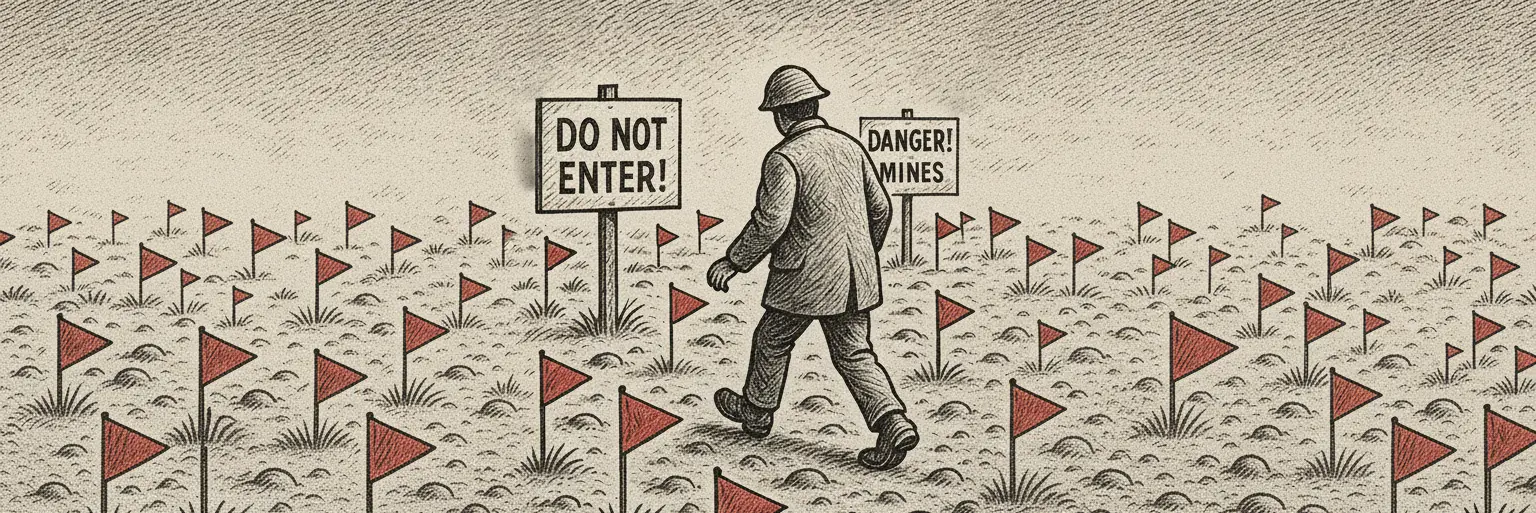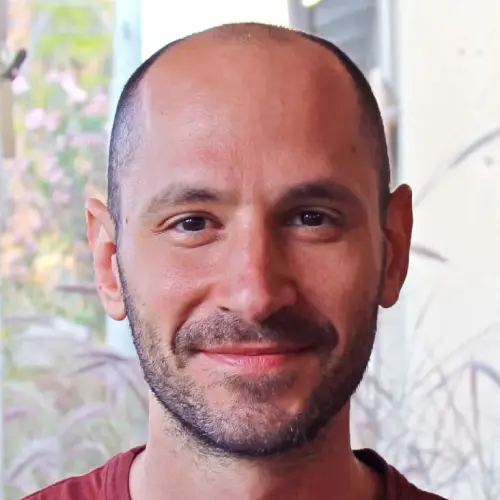I recognize red flags easily now, and more importantly, I actually listen to them.
This wasn't always the case. For years, I had a different relationship with warning signs. I'd see them, feel them in my gut, then immediately start the mental gymnastics.

The Art of Self-Deception
In the past, I didn't think red flags were actually red flags. "It's just a behavior I don't appreciate," I'd tell myself. "It's nothing. Who says it'll happen again?"
Even when I recognized them clearly, doubt would creep in: "Maybe I'm not seeing this right? Maybe they're actually behaving more logically than I am? Maybe I'm the problem?"
So I'd go deeper with these people, ignoring another flag, then another. Until at some point, when I was already deep inside the relationship, I couldn't ignore them anymore. By then, they weren't just flags—they were boundary violations, painful experiences, sometimes even traumatic ones.
They fooled me once,
They fooled me twice,
They fooled me thrice,
Shame on me...
But let's be more accurate: I fooled myself when I ignored them.
The Breaking Point
After many years of pain, after a full decade of hitting rock bottom and returning from the dead, the camel's back finally broke. It was the last straw, the final time I would turn a blind eye to a red flag.
Something fundamental shifted. The cost of self-betrayal had become too high. The pattern was too clear to deny anymore.
Beyond Acceptance
I started to accept that people are who they are. I learned to accept them as they are, each at the appropriate distance and format that allows us both to be well.
This wasn't about judgment or rejection. It was about reality. Some relationships need space to breathe, others need clear boundaries to remain healthy.
And something else happened... I started to accept myself!
Trusting the Only Voice I Have
I can't doubt my inner voice because it's the only voice I have. I go with it, listen to it, and learn about the world together with it.
Success used to be my highest value, and for it, I abandoned myself repeatedly. Today, being true to myself is the highest value, and together we're learning how to also succeed—but differently.
I even changed the definition of success accordingly! Success for me is no longer "achieving the result I planned to achieve." Success is every step I take that's connected to my heart. A step where I'm whole with myself within it.
And so, every moment I listen to my heart and allow it to become thoughts, words, and actions—I succeed.
The Gift of Inner Knowing
What I've learned is that our inner knowing is always there, always accurate. The red flags we see aren't mistakes or overreactions—they're our internal guidance system working perfectly.
The problem was never my ability to spot red flags. The problem was my willingness to override what I knew to be true.
When we ignore these signals, we're not just risking future pain. We're actively teaching ourselves that our inner voice doesn't matter, that our feelings aren't valid, that we can't trust ourselves.
Living from Self-Trust
Today, when I see a red flag, I don't negotiate with it. I don't rationalize it away. I honor it as the gift it is—my inner wisdom protecting me, guiding me toward relationships and situations that truly serve my highest good.
This doesn't mean I live in fear or constant vigilance. Quite the opposite. When you trust yourself deeply, you can be more open, more vulnerable, more present—because you know you'll honor your boundaries when they need to be honored.
If you're tired of repeating painful patterns, of finding yourself in the same difficult situations with different faces, perhaps it's time to explore what's keeping you from trusting your inner knowing. This is exactly what we uncover in the Inner Compass journey—learning to distinguish between fear and intuition, between old wounds and genuine warnings.
